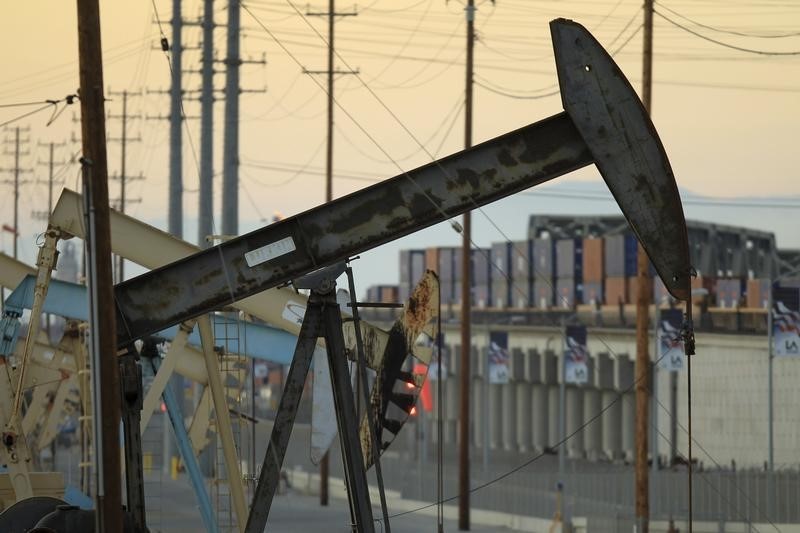By Shariq Khan
NEW YORK (Reuters) -Oil prices rose a dollar a barrel on Tuesday as supply disruptions increased and traders bet demand will grow if the U.S. Federal Reserve cuts borrowing costs this week as widely expected.
Both contracts reached their highest levels yet this month. futures rose $1.10, or 1.6%, to $71.41. futures rose 95 cents, or 1.3%, to settle at $73.70 a barrel.
More than 12% of U.S. Gulf of Mexico crude production was offline last week after Hurricane Francine, sending oil prices higher in four of the last five sessions. A recovery after Brent reached the lowest level in almost three years last Tuesday.
Prices also found support from renewed tensions in the Middle East, AEGIS Hedging analysts said.
The militant group Hezbollah vowed to take revenge on Israel after pagers were detonated across Lebanon on Tuesday, killing at least eight people and wounding nearly 3,000 others, including fighters and the Iranian envoy to Beirut. Israel declined to comment on the blasts.
Prices were supported by supply disruption in Libya, where a rift between rival factions over control of the central bank has led to lower oil production and exports, Rystad analysts said on Tuesday.
United Nations-led talks to resolve the crisis failed to reach an agreement this week.
Libya’s crude oil exports tripled last week to around 550,000 barrels per day, a Reuters survey of Kpler shipping data showed. That was still half of the OPEC producer’s exports last month, which stood at more than 1 million barrels per day, the data showed.
Investors also hoped that the Fed’s long-awaited rate cut could boost demand in the largest oil-consuming country.
Fed funds futures show that markets are pricing in a 69% chance that the central bank will cut rates by 50 basis points.
A cut of that magnitude could soften the U.S. currency and boost oil and other dollar-denominated commodities, independent energy and shipping analyst Matias Togni wrote on Tuesday.
There are also signs of improving demand in China, Togni said, where a turbulent economy has hit demand from the biggest oil importer so far this year. The country’s imports this month are approaching their highest level this year, at more than 11 million barrels per day, he added.

Oil prices were largely unchanged after market sources said data from the American Petroleum Institute showed both oil and fuel inventories rose last week.
Analysts expect oil inventories to fall by about 500,000 barrels, according to a comprehensive Reuters poll. The official report from the U.S. Energy Information Administration is expected at 10:30 a.m. ET on Wednesday. [EIA/S]


